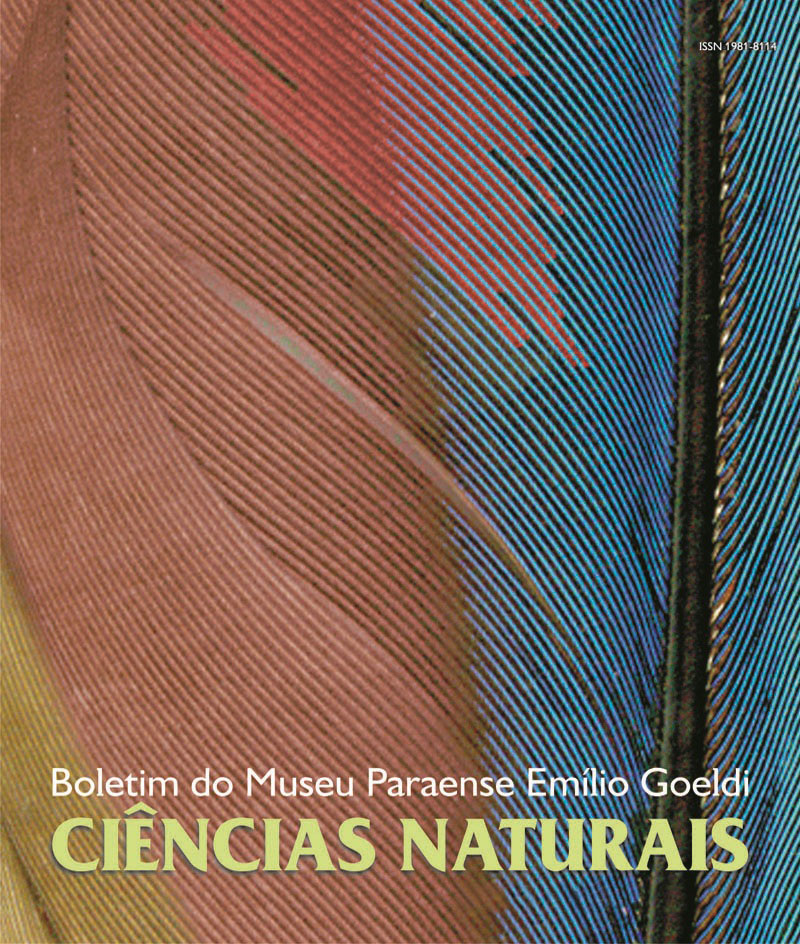Cranial osteology and myology of Eurypyga helias (Pallas, 1781) (Gruiformes: Eurypygidae) compared with other Gruiformes
DOI:
https://doi.org/10.46357/bcnaturais.v2i1.713Keywords:
Gruiformes, Eurypygydae, Eurypyga helias, Anatomy, Osteology, Jaw apparatusAbstract
The study of the jaw apparatus of the sunbittern Eurypyga helias may provide us with some information about the relationship among the Eurypygidae and other Gruiformes. This study was based on the analysis of 66 skulls from the Aramidae (Aramus guarauna), the Psophiidae (Psophia crepitans, P. leucoptera, P. viridis, P. v. obscura), the Rallidae (Laterallus exilis, Gallinula martinica), the Heliornithidae (Heliornis fulica) and the Eurypygidae (Eurypyga helias). The detailed descriptions of the jaw apparatus from Eurypyga helias were used as a referencial for comparison among the several anatomical structures observed in other species. The results on cranial osteology showed four common characteristics among Eurypygidae and those Gruiformes: schizognathous palate, septum nasale absent, absence of a nasofrontal suture, and pars symphyliasis with 20% of the total length of the mandible. Data on cranial osteology exclusive to E. helias are: rostral part of the paraesfenoid rostron reduced; lacrimal process with three branches; ecthetmoid bone vestigial; paraoccipital process well developed; absence of subcondilar fossae; maxillopalatin process forms a well developed vesicle; dorsal process of the pterigoid bone developed; and capitulum oticum twice the size of the capitulum squasmosum. E. helias shares with A. guarauna (Aramidae) the same form of the maxillopalatin and mandibule processes; the maxilar and frontal processes of the nasal bone are unfusioned and a short paraesfenoid rostrum. Data from the jaw musculature showed a relative similiarity between E. helias and G. martinica (Rallidae). In general the complexity of the jaw musculature of E. helias stands on an intermediate condition between P. Viridis (most complex) and G. martinica (less complex). According to all analysed data we conclude that it is not possible to establish any relationship among the Eurypygidae and other Gruiformes. It is suggested that a complete morphological investigation must be developed within the Gruiformes including a complementary systematics analysis of this group.
Downloads
Published
Issue
Section
License
Publication means fully assigning and transferring all copyrights of the manuscript to the journal. The Liability Statement and
Assignment of Copyrights will be enclosed with the notice of acceptance. All the authors must sign the document and return it to the journal.






